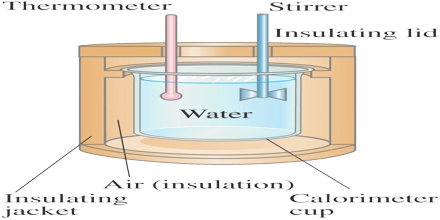In today’s world, energy conservation has transcended from being a mere luxury to a necessity. As households grapple with fluctuating energy costs and environmental concerns, becoming conscientious stewards of energy is imperative. Conserving energy not only reduces utility bills but also diminishes the carbon footprint, promoting a sustainable future for generations to come. Here, we will delve into three simple yet impactful strategies to conserve energy at home without straining your finances.
1. Optimize Your Heating and Cooling Systems
The climate control systems within our homes constitute the most significant portion of energy expenditure. Optimizing these systems is critical for energy conservation. Start by conducting a systematic audit of your home. Identify and seal any air leaks around windows and doors with weatherstrip or caulk, preventing conditioned air from escaping. This relatively inexpensive intervention can significantly enhance the efficiency of your heating and cooling systems.
Consider investing in a programmable thermostat, if you haven’t already. These devices allow homeowners to set specific temperature schedules tailored to their daily routines. For instance, lowering the thermostat by just a few degrees during winter or raising it during summer, when you’re away, can lead to substantial energy savings over time. Studies indicate that utilizing programmable thermostats can reduce energy consumption by approximately 10-15% annually.
Furthermore, routine maintenance of your HVAC system is paramount. Regularly changing air filters and ensuring that ducts are clean not only prolongs the lifespan of your system but also sustains its efficiency. Simple actions, like ensuring the outdoor unit is free from debris, can optimize performance and prevent energy waste.
2. Embrace Energy-Efficient Lighting Solutions
Lighting is an omnipresent element of our homes, and often the source of unnecessary energy consumption. Transitioning to energy-efficient lighting solutions, such as LED bulbs, is a viable strategy. Though the upfront cost may be higher than traditional incandescent bulbs, the longevity and reduced energy consumption of LEDs lead to diminished expenditures over time.
Moreover, take advantage of natural light. During daylight hours, keep curtains and blinds open to illuminate your space. This reduces reliance on artificial lighting, conservatively saving energy while enhancing your ambiance. In spaces where artificial lighting is necessary, consider using task lighting instead of overhead fixtures. By directing light exactly where it is needed, task lighting can significantly minimize energy usage.
In addition, strategically positioning mirrors can amplify natural light, thereby reducing the need for artificial lighting during the day. This simple, aesthetic solution can transform spaces while fostering energy conservation. Remember that every little action accumulates, and over time, these changes manifest as significant energy savings.
3. Use Appliances Wisely
Household appliances contribute significantly to overall energy consumption. To mitigate their impact, it is essential to understand and adopt energy-efficient practices. First and foremost, when purchasing new appliances, prioritize those with the ENERGY STAR® label. These appliances meet stringent energy requirements, providing the same performance at a fraction of the energy expenditure.
Once you have equipped your home with energy-efficient appliances, develop a habit of using them judiciously. For example, consider fully loading the dishwasher and washing machine before running them. Running partial loads consumes energy disproportionately, negating your efforts at conservation. Additionally, opting for cold water settings when washing clothes can conserve energy while extending the lifespan of your garments.
Implementing a habit of unplugging appliances when not in use is another powerful yet often overlooked tactic. Many devices, including chargers and small kitchen appliances, draw energy even when turned off—a phenomenon known as “phantom load.” Investing in smart power strips can help eliminate power leakage, as they cut off power to devices when not in use.
The Broader Implications of Home Energy Conservation
As individuals, the act of conserving energy might seem like a drop in the ocean; however, collectively, these conscientious efforts contribute to a larger movement toward sustainability. Each household that implements even one of these strategies contributes to a decrease in overall energy demand, which can lead to far-reaching effects on energy production and environmental health.
Addressing energy consumption at the household level also holds profound implications for economic stability. Reduced energy use translates to diminished utility bills, leaving families with more financial resources for other necessities or investments. The ripple effect of lower energy demand can lead to reduced reliance on fossil fuels, thereby accelerating the transition to renewable energy sources.
In conclusion, conserving energy at home does not necessitate a substantial financial investment or a drastic lifestyle change. Simple adjustments, such as optimizing heating and cooling, embracing energy-efficient lighting, and using appliances judiciously, can yield significant energy savings. Furthermore, these small changes can have a transformative impact on the environment and provide broader economic benefits. By prioritizing energy conservation, we create a sustainable future, aligning our daily choices with the well-being of the planet.








